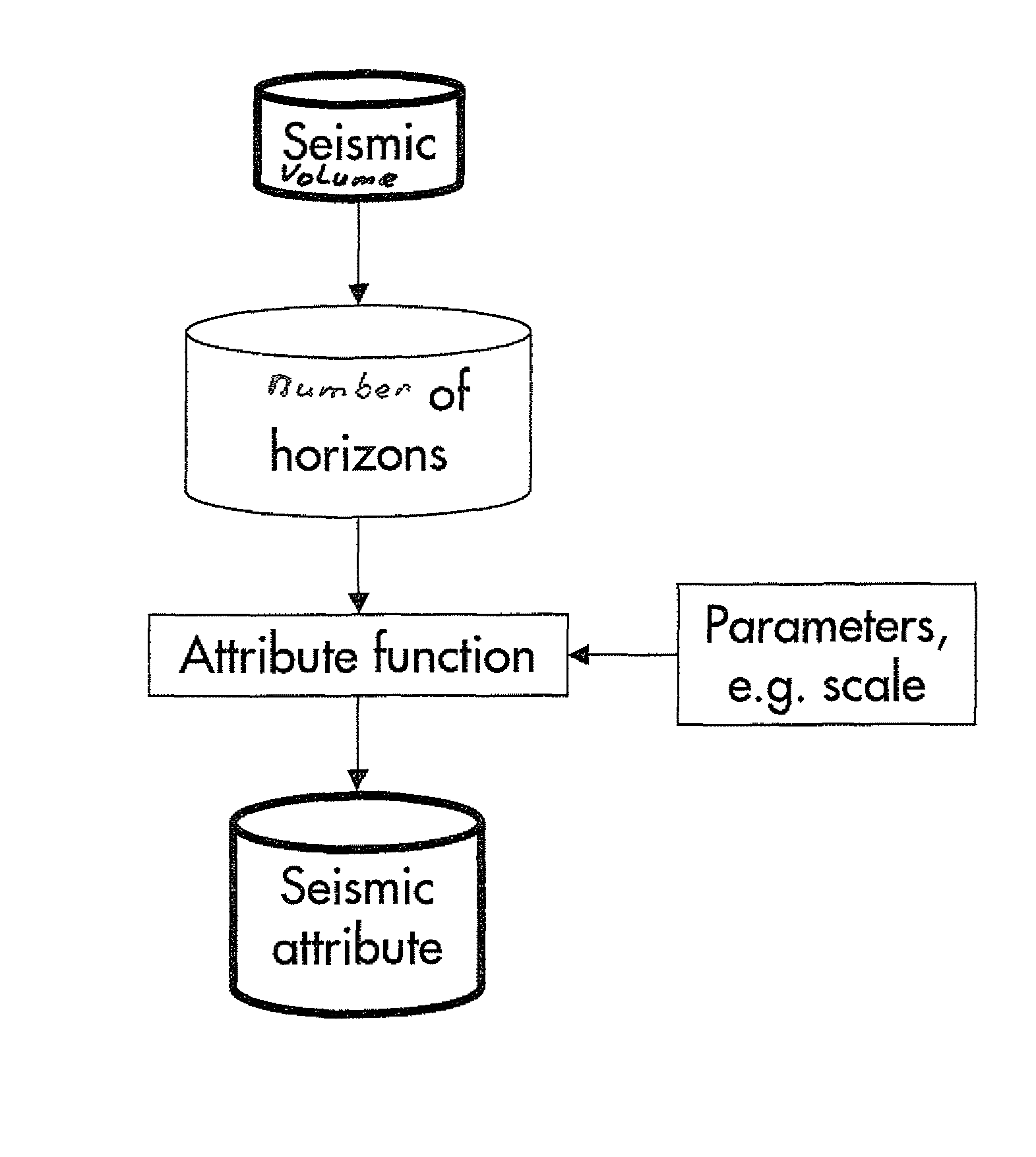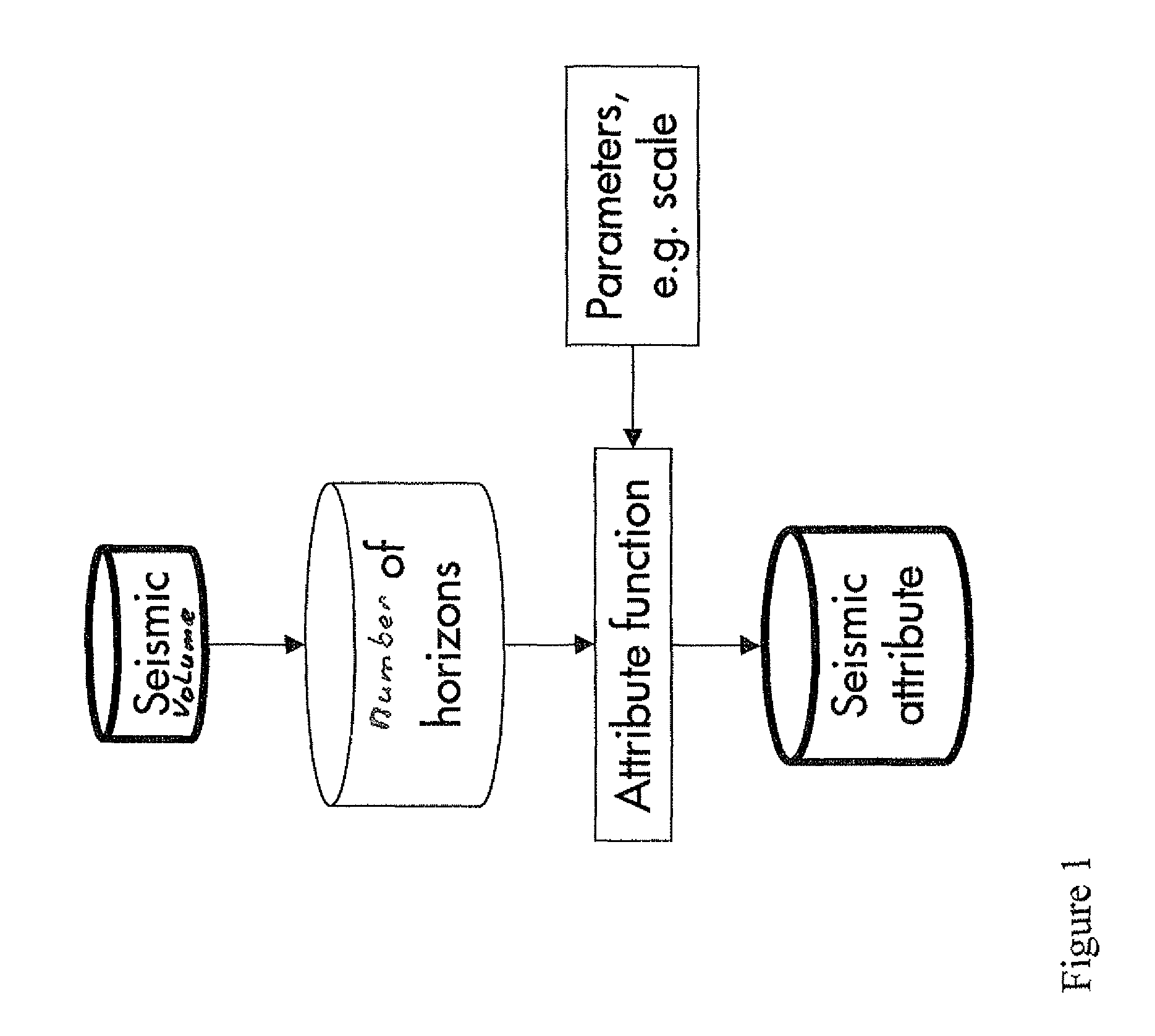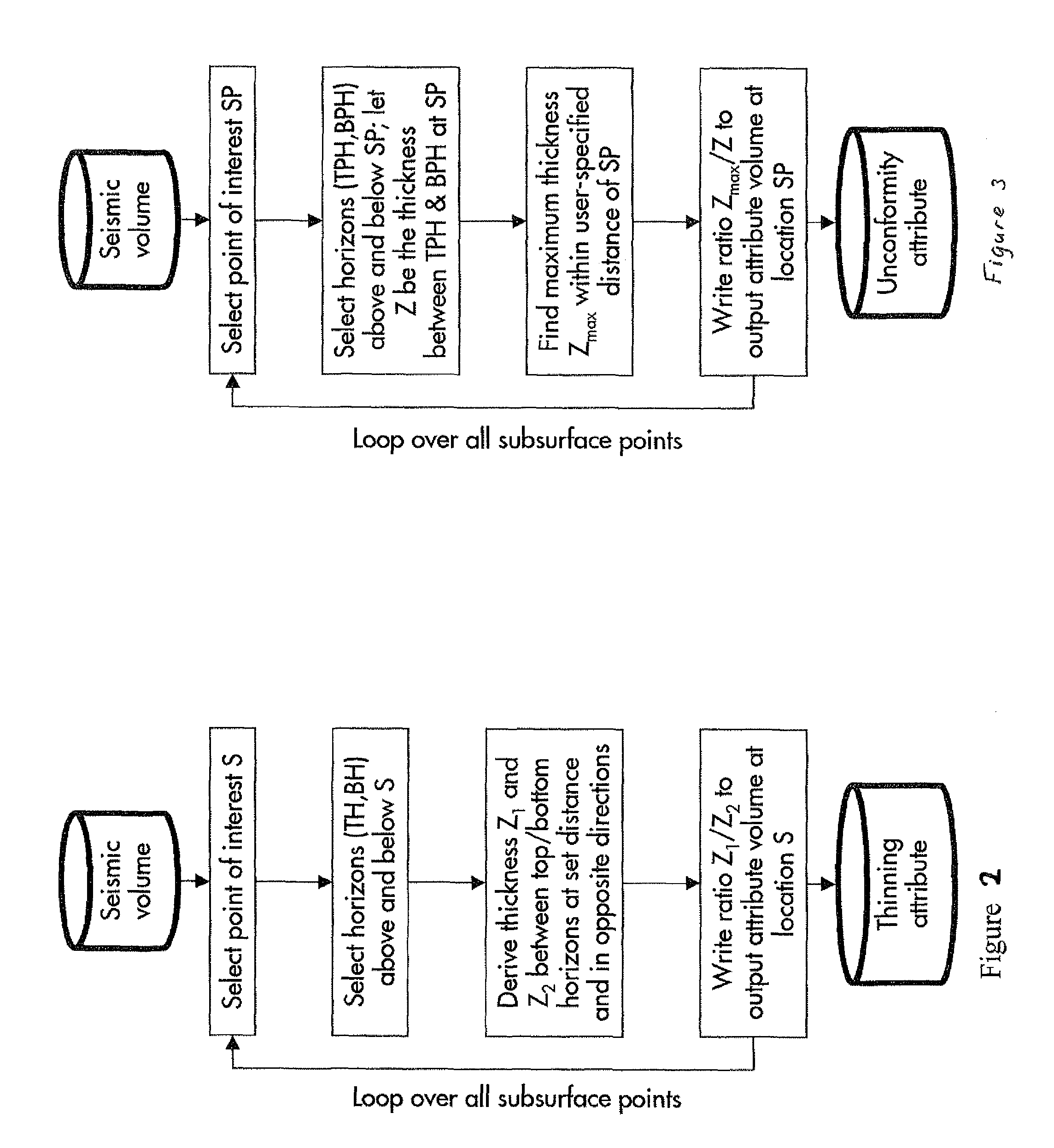Method for analysis seismic data with attribute functions
a technology of attribute functions and seismic data, applied in seismology for waterlogging, separation processes, instruments, etc., can solve the problems of standard seismic attributes, which cannot capture geometries at such scales, and achieve the effect of improving the interpretability of final seismic attributes
- Summary
- Abstract
- Description
- Claims
- Application Information
AI Technical Summary
Benefits of technology
Problems solved by technology
Method used
Image
Examples
Embodiment Construction
[0061]Seismic stratigraphy, the study of stratigraphy and depositional facies as interpreted from seismic data, is critical to the understanding of basin evolution and predicting the spatial distribution of reservoir, seal and source rocks. The most widely used seismic stratigraphic interpretation technique within the industry is referred to as “sequence stratigraphy”.
[0062]Classic sequence stratigraphy is based on the subdivision of seismic data into relative chronologic packages, referred to as seismic sequences and seismic systems tracts. Regional flooding events, sequence boundaries and parasequence boundaries can be identified based on the geometry of seismic reflection terminations (onlap, downlap, truncation, toplap & apparent truncation). Seismic facies within these systems tracks can be delineated in terms of reflector configuration, continuity, amplitude, frequency, and interval velocity. These, in turn, can be interpreted in terms of environment of deposition and used as ...
PUM
 Login to View More
Login to View More Abstract
Description
Claims
Application Information
 Login to View More
Login to View More - R&D
- Intellectual Property
- Life Sciences
- Materials
- Tech Scout
- Unparalleled Data Quality
- Higher Quality Content
- 60% Fewer Hallucinations
Browse by: Latest US Patents, China's latest patents, Technical Efficacy Thesaurus, Application Domain, Technology Topic, Popular Technical Reports.
© 2025 PatSnap. All rights reserved.Legal|Privacy policy|Modern Slavery Act Transparency Statement|Sitemap|About US| Contact US: help@patsnap.com



